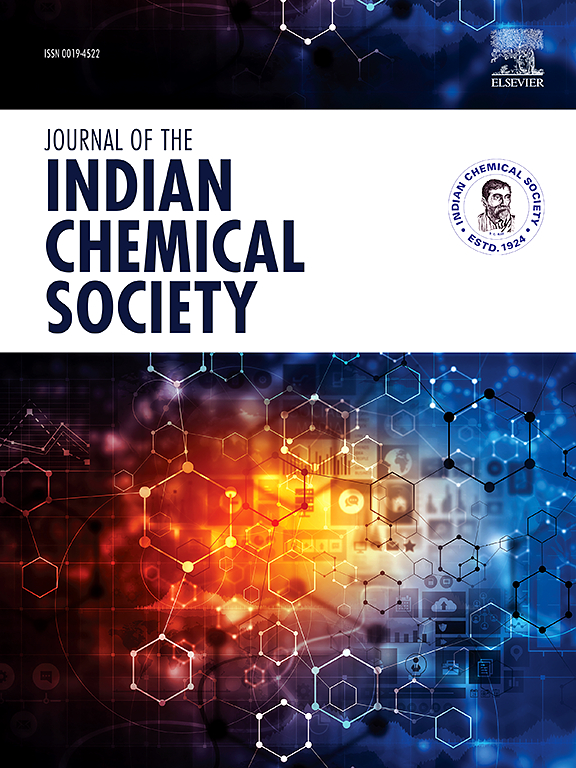Exploring the antimicrobial activity of hydrothermally synthesized copper pyrophosphate nanoflakes
IF 3.2
4区 化学
Q2 CHEMISTRY, MULTIDISCIPLINARY
引用次数: 0
Abstract
In recent years, infections and the escalating resistance to antimicrobial drugs have emerged as significant health concerns. Due to their remarkable effectiveness and minimal potential for bacteria to develop resistance, copper-based nanomaterials are being considered as prospective alternatives to conventional antibiotics. In this study, copper pyrophosphate nanoflakes were synthesized using a simple hydrothermal technique with an inorganic phosphate source. These nanoflakes, characterized by a high aspect ratio, exert a substantial impact on bacterial cell walls, effectively eliminating microbial pathogens. X-ray diffraction (XRD) analysis confirmed the monoclinic phase of the copper pyrophosphate nanomaterial, while the band gap energy of 2.7 eV was estimated from the Tauc plot. Additionally, the antimicrobial efficacy of Cu2P2O7 was evaluated against various gram-negative, gram-positive, and fungal pathogens at different concentrations. Notably, all tested bacterial strains exhibited moderate antimicrobial effects at concentrations of 5 mg/mL. For instance, S. aureus and E. coli displayed a 13 mm zone of inhibition, demonstrating excellent activity and lower cytotoxicity. These findings underscore the potential of Cu2P2O7 as a promising candidate for the development of novel drugs targeting pathogenic bacteria affecting human health.

探索水热合成焦磷酸铜纳米片的抗菌活性
近年来,感染和抗菌药物耐药性的不断升级已成为重大的健康问题。由于铜基纳米材料疗效显著,细菌产生抗药性的可能性极小,因此被认为是传统抗生素的未来替代品。本研究采用简单的水热技术和无机磷酸盐源合成了焦磷酸铜纳米片。这些纳米片具有高纵横比的特点,能对细菌细胞壁产生重大影响,有效消除微生物病原体。X 射线衍射(XRD)分析证实了焦磷酸铜纳米材料的单斜相,而根据陶克曲线图估算出的带隙能为 2.7 eV。此外,还评估了 Cu2P2O7 在不同浓度下对各种革兰氏阴性、革兰氏阳性和真菌病原体的抗菌效果。值得注意的是,在 5 毫克/毫升的浓度下,所有受测细菌菌株都表现出中等程度的抗菌效果。例如,金黄色葡萄球菌和大肠杆菌显示出 13 毫米的抑制区,显示出极佳的活性和较低的细胞毒性。这些发现凸显了 Cu2P2O7 作为开发针对影响人类健康的病原菌的新型药物的潜力。
本文章由计算机程序翻译,如有差异,请以英文原文为准。
求助全文
约1分钟内获得全文
求助全文
来源期刊
CiteScore
3.50
自引率
7.70%
发文量
492
审稿时长
3-8 weeks
期刊介绍:
The Journal of the Indian Chemical Society publishes original, fundamental, theorical, experimental research work of highest quality in all areas of chemistry, biochemistry, medicinal chemistry, electrochemistry, agrochemistry, chemical engineering and technology, food chemistry, environmental chemistry, etc.

 求助内容:
求助内容: 应助结果提醒方式:
应助结果提醒方式:


